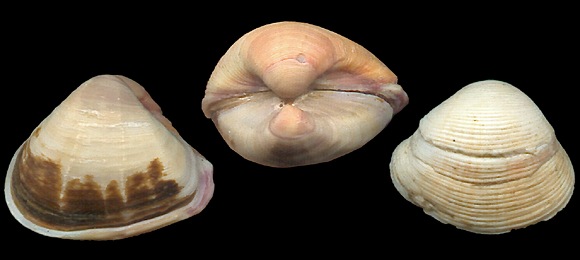
Barents Sea to Angola, Mediterranean, Black Sea; Greenland to Florida, Antilles, northern Brasil. Introduced in California and Australia. The species lives in sediments, often with a part of mud, from intertidal grounds to the continental shelf. Suspension feeder. Original taxon: Tellina gibba. Synonyms: ovata, nucleus, naticuta, inaequivalvis… – Beach, San Carlos de la Rapita, Tarragona, Catalunya, NE. Spain. 10-11mm.
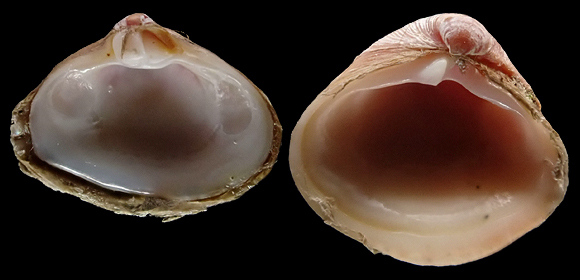
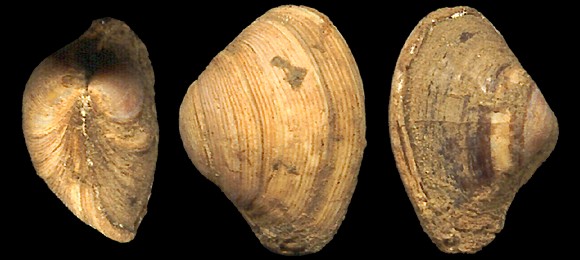
In mud in shallow water, Ancona, Marche, NE. Italy. 12mm.
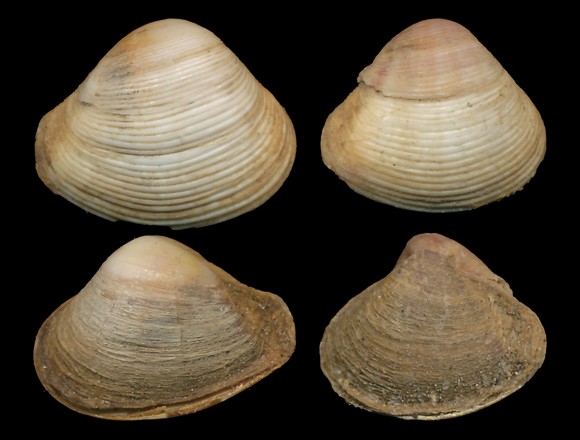
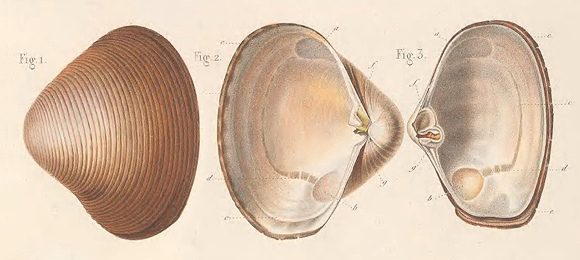
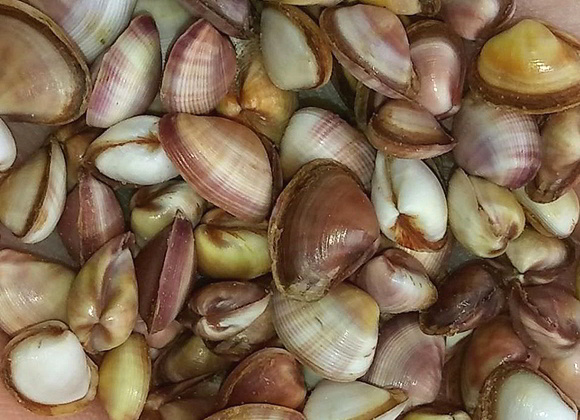
– (CC BY-NC-SA) –
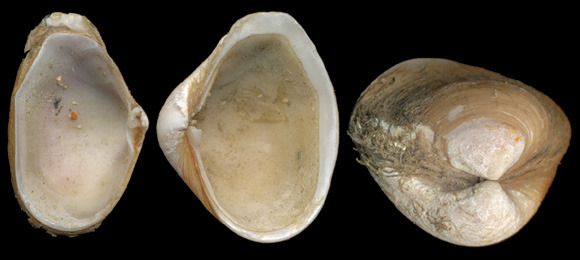
20-30m deep, Setubal, Lisboa coast, Portugal. 10-11mm.
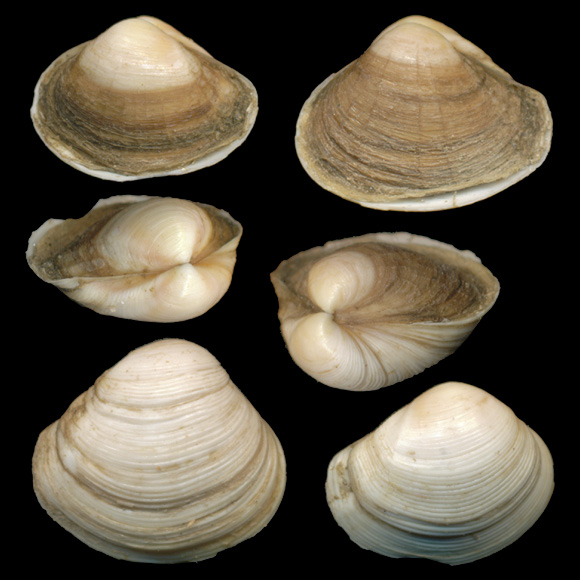
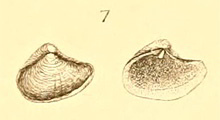 « Mya inaequivalvis: Mya with a sub-triangular, strong, thick, opaque, white shell, frequently covered with a brown epidermis ; undervalve deep ; beak central, prominent, slanding high above the hinge, furnished with one strong, erect tooth somewhat recurved. Inside fmooth, the margin appearing as if ground to an edge. Upper valve not half the size of the other, smooth, but radiated with a few obsolete striae from the beak ; at the hinge a notch to receive the tooth of the opposite valve. When closed the margin of the under valve projects considerably. » – L. G. Montagu: Test. Britt., London 1803, plate XXVI, via BHL.
« Mya inaequivalvis: Mya with a sub-triangular, strong, thick, opaque, white shell, frequently covered with a brown epidermis ; undervalve deep ; beak central, prominent, slanding high above the hinge, furnished with one strong, erect tooth somewhat recurved. Inside fmooth, the margin appearing as if ground to an edge. Upper valve not half the size of the other, smooth, but radiated with a few obsolete striae from the beak ; at the hinge a notch to receive the tooth of the opposite valve. When closed the margin of the under valve projects considerably. » – L. G. Montagu: Test. Britt., London 1803, plate XXVI, via BHL.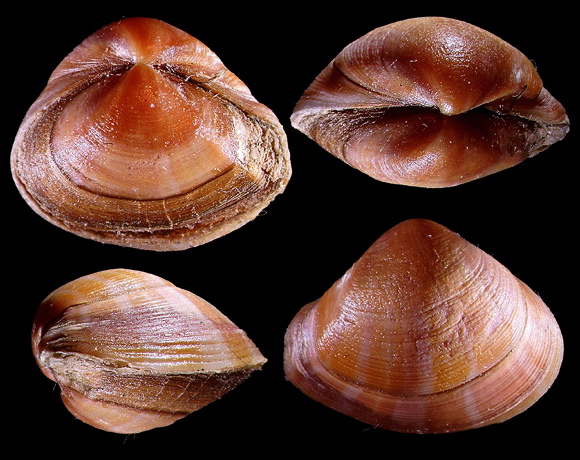
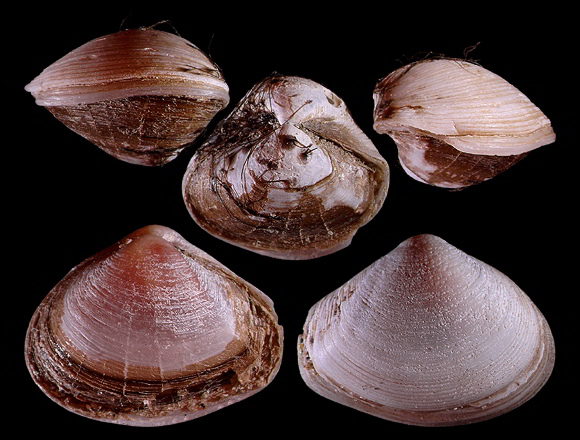
The small one was used as anchor in the byssal thread of a mussel cluster, together with little pebbles and shell debris. The larger one is peculiarly flat.
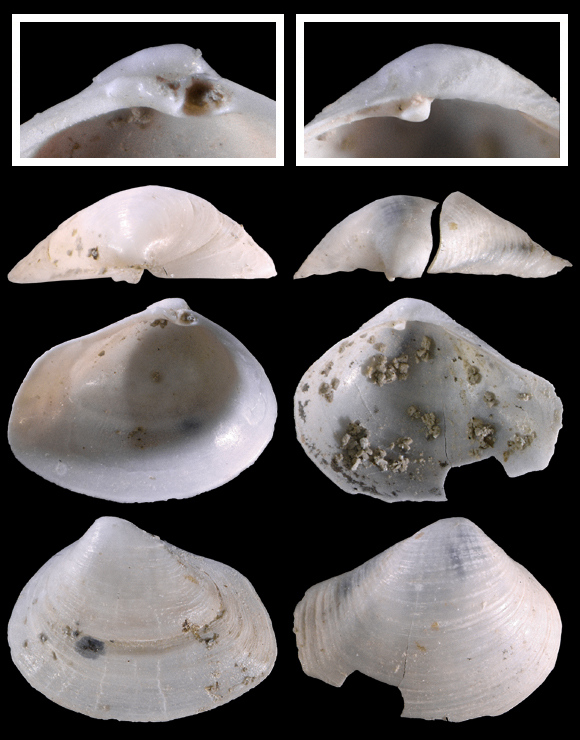
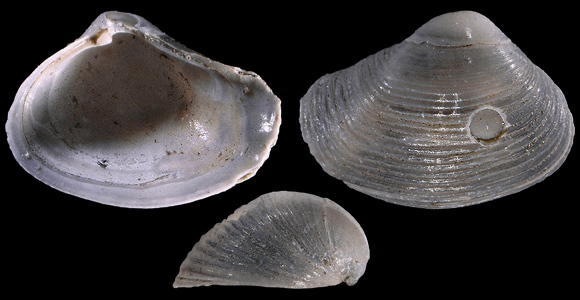
Right valve of a juvenile. 3,6mm.
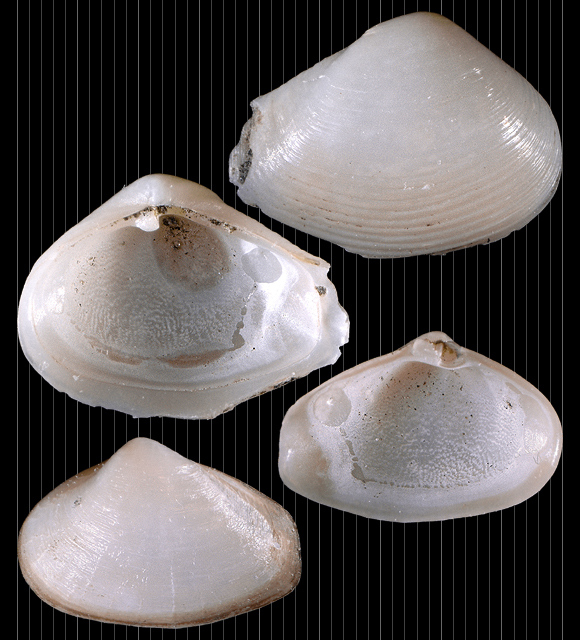
Size ≈ 4,7 & 5,5mm.
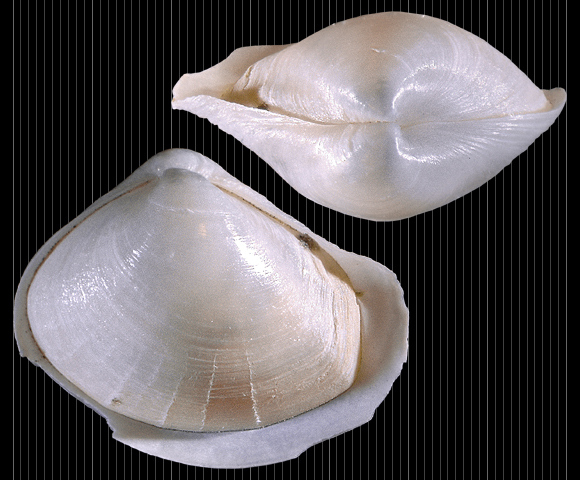
Size ≈ 5mm.